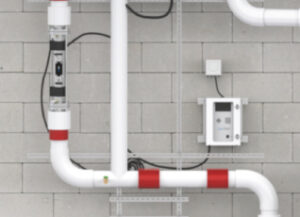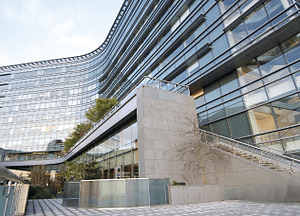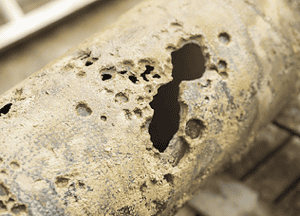Sediment is a collection of foreign materials introduced into building water systems from several sources. Some of these sources are naturally occurring, such as soil runoff. Other sources are infrastructure-related, most often from pipe and equipment corrosion.
Sediment in your building’s water system can cause several issues. It can damage piping and equipment, decrease the efficacy of secondary disinfection, create additional corrosion particulate, and encourage bacterial growth.
Read on to learn the common causes of sediment in water systems and how to treat it.
Sediment from the incoming water supply
Most municipalities and water treatment facilities filter the water before delivering it to consumers, but it’s impossible to remove all sediment.
Decades of sediment deposits on the interior of pipes can be disturbed by hydrant flushing, water main breaks, and other disruptive events. As water travels to your facility, it can pick up this loose sediment as well as corrosion particulate from old and corroded pipes outside your facility.
The best way to keep sediment out of your building is to install a sediment filtration system at your point of entry. This system will catch particles like a net before they can enter and cause issues.
Corroded pipes and equipment
Sediment in plumbing can cause pipes and water-bearing equipment to corrode prematurely. The same happens with oxidant disinfectants.
Have an expert perform water quality tests to identify the cause of the corrosion. They’ll determine if you have sediment in your water system contributing to the corrosion and where the sediment is coming from.
They can also check for signs of corrosive contaminants. Non-oxidant disinfection technologies can help prevent future corrosion.
Old pipes and equipment
Water quality problems are more common with old pipes, and they’re more susceptible to damage from sediment. Keep a record of how old your equipment is to determine if you need to replace it.
Sediment may also be a sign that you need to call a certified plumber for help. They can help you assess the extent of the damage and what pipes and equipment need to be replaced.
Worn-out rubber parts and old equipment
Take out a bit of the sediment in your water. If it feels rubbery, it could be particles from a rubber piece of your plumbing that’s degrading. These include:
- Washers
- Gaskets
- Hoses
- Seals
You can try inspecting them to find out which ones were affected. You may need to replace them if they’ve been damaged. The culprit could be oxidant-based disinfectants, so consider switching to a non-oxidant method.
Construction and renovation
Construction and renovation events can also impact the amount of sediment in your building water systems. Increases in sediment can occur from construction-related excavations and water main breaks. Pressure changes (turning on and off the pumps and valves) can disrupt accumulated sediment, like corrosion products and scale deposits, and release it throughout the building water system. Building and water system shutdowns can lead to stagnation, allowing sediment to accumulate during the shutdown.
These disruptions can all lead to a high sediment load throughout the building, impacting equipment, disinfection, and bacterial growth.
Where to get help removing sediment from water
Sediment naturally enters a building’s water, but old equipment and some disinfection methods can increase it. Sediment can damage your equipment and increase your bacterial risk.
Before choosing a sediment removal method, be sure to thoroughly evaluate the options available to you. Not all solutions are right for your facility’s unique infrastructure and may inadvertently cause other issues, like increased bacterial activity.
If you’re unsure what’s best, LiquiTech can help. Contact us for your sediment filtration needs today.


